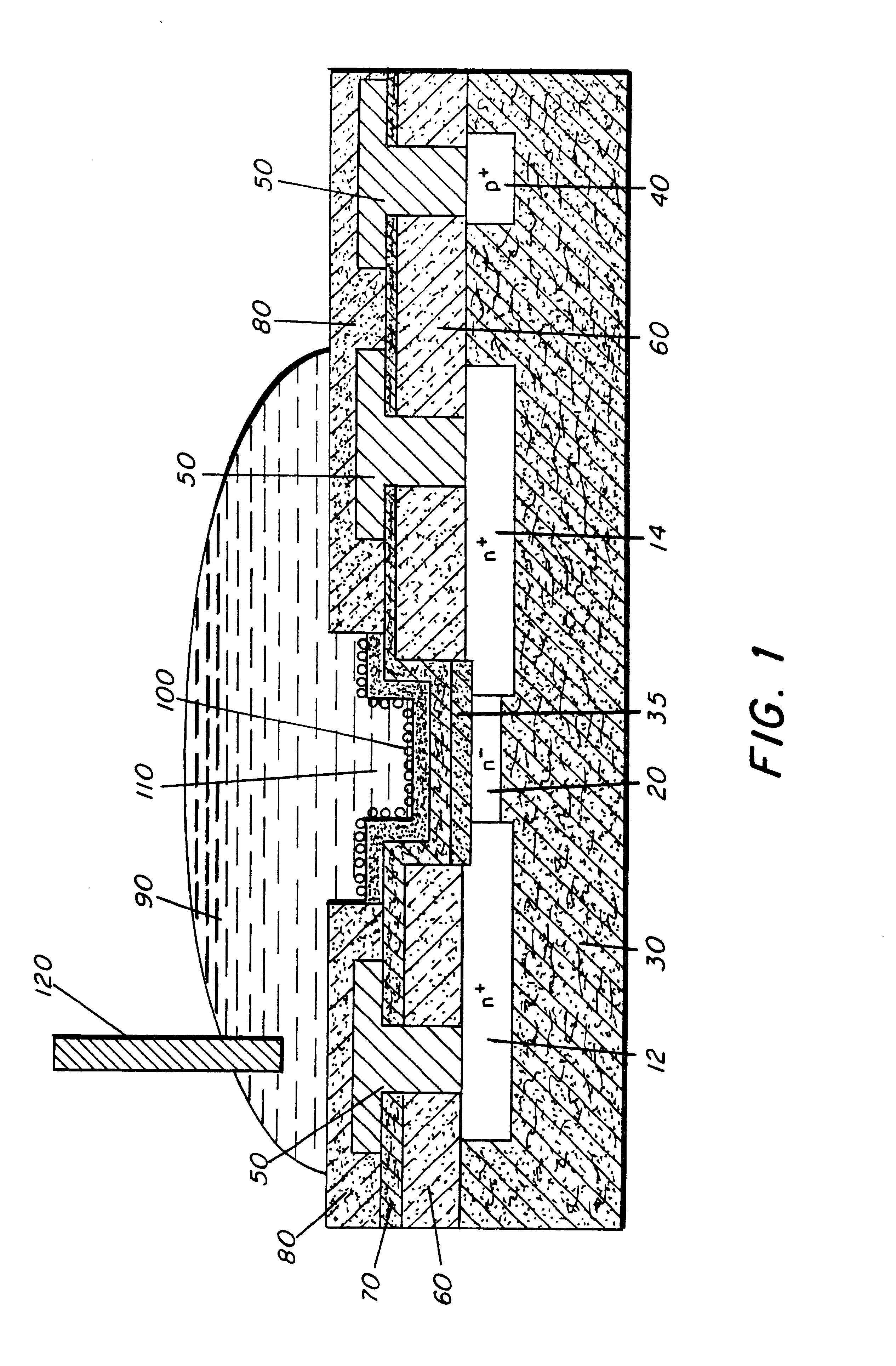Microelectronic device and method for label-free detection and quantification of biological and chemical molecules
a micro-electronic device and label-free technology, applied in the field of micro-electronic devices and methods for label-free detection and quantification of biological and chemical molecules, can solve the problems of labor-intensive use of such labeling reagents, prone to human and equipment errors, and use of labeling reagents. to achieve the effect of sensitive and accurate detection of target molecules
- Summary
- Abstract
- Description
- Claims
- Application Information
AI Technical Summary
Benefits of technology
Problems solved by technology
Method used
Image
Examples
example 1
A source and drain were formed by a P implant in a semiconductor structure at 80 keV to an areal density of 1.times.10.sup.15 cm.sup.-2. The channel region is 32 .mu.m.times.140 .mu.m and P implanted at 60 keV to an areal density of 6.times.10.sup.11 cm.sup.-2. Body contacts were formed by B implantation at 80 keV to 1.times.10.sup.15 cm.sup.-2. A 63 nm thermal oxide layer was followed by a 30 nm LPCVD Si.sub.3 N.sub.4 layer. Following a Cr / Au contact metallization, a 600 nm APCVD oxide layer was formed over all. The present example used 36 devices per wafer arranged in 9 groups of 4 on a 6.5 mm pitch. Each device had a separate and independent source and drain contact. Additionally, 14 gated and ungated test structures were included on the wafer for use as reference standards and process and instrumentation diagnostic tools.
Immobilization procedures have relied on the facile attachment of thiol (--S) ligands to Au evaporated onto the dielectric layer by means of molecular self-asse...
example 2
In contrast to Example 1, the gold modified dielectric layer was in turn modified with thiol terminated single strand DNA. The sensors were exposed to either a solution with 1 fM of single stranded DNA that was complementary to the DNA on the surface, a solution with 1 fM of single stranded DNA that contained a one base pair mismatch to the DNA on the surface, or a blank buffer solution. At this concentration, response to the target DNA was a drop in current of 1.2+ / -0.5%, while the current increased 1.2+ / -0.5% for the devices exposed to the control buffer solution and 3.0+ / -0.3% for those exposed to the mismatch DNA. FIG. 2 shows the typical response of the sensors to the three different solutions plotted as the fractional change in current. The fractional change in source to drain current is (i.sub.SD.sup.before -i.sub.SD.sup.after)i.sub.SD.sup.before.
PUM
| Property | Measurement | Unit |
|---|---|---|
| electron mobility | aaaaa | aaaaa |
| dielectric constant εi | aaaaa | aaaaa |
| dielectric constant εi | aaaaa | aaaaa |
Abstract
Description
Claims
Application Information
 Login to View More
Login to View More - R&D
- Intellectual Property
- Life Sciences
- Materials
- Tech Scout
- Unparalleled Data Quality
- Higher Quality Content
- 60% Fewer Hallucinations
Browse by: Latest US Patents, China's latest patents, Technical Efficacy Thesaurus, Application Domain, Technology Topic, Popular Technical Reports.
© 2025 PatSnap. All rights reserved.Legal|Privacy policy|Modern Slavery Act Transparency Statement|Sitemap|About US| Contact US: help@patsnap.com



